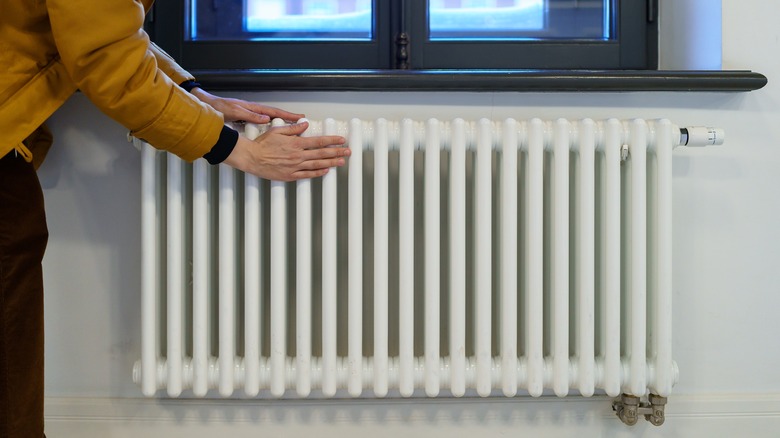Heavy Duty Aluminum Foil Will Help You Make The Most Of Your Radiator
Radiators are essential heating fixtures commonly found in older homes and apartment buildings, and they act as the main source of heat during the colder winter months. But radiators often have a big issue with heating efficiency. Enter heavy duty aluminum foil. A significant amount of heat can be lost when these radiators are positioned along exterior walls, but if a sheet of foil is placed behind it, heat loss can be dramatically reduced. The foil acts as a reflective surface by redirecting the heat back into the room instead of allowing it to dissipate into the walls and beyond.
In addition to using aluminum foil, there are other strategies you can implement to save money on heating costs. Rearranging your furniture, keeping up with routine radiator maintenance, and installing a radiator shelf can all help to direct the warm air into the room instead of allowing it to rise directly to the ceiling or be absorbed into the wall.
Keep in mind that the aluminum foil trick is only meant to be used on radiators that are located against exterior-facing walls. If your radiator is positioned against an internal or shared wall, you won't get the same effect.
How to effectively use the aluminum foil hack
Aluminum foil is a humble yet versatile household staple, and it holds the key to unlocking your radiator's true heating potential. By placing aluminum foil behind your radiator, you can prevent the loss of warm air to heat-sucking exterior walls and instead reflect the warm air back into the room. Applying the foil is straightforward — all you need to do is make sure that the reflective side is facing towards you, into the room. You can tape the foil directly to the wall or create cardboard panels that have been wrapped in foil so that they're easy to slide in and out as needed. Although tin foil itself isn't flammable, it's important to exercise caution when placing objects on or near a hot radiator.
Keep in mind that this isn't a permanent solution, and aluminum foil, even heavy duty aluminum foil, will begin to break down over time. So you'll either need to keep replacing it, use commercial-grade aluminum sheeting, or invest in pricier but more durable reflective panels.
Additional tips for maximizing your heating
In addition to using aluminum foil, there are other ways you can maximize your heat and save money. The easiest option is to simply turn your thermostat down by one or two degrees so that it hovers in the low to mid-70s. Consider moving your furniture a few inches away from the radiator, as this allows hot air to move around freely and more efficiently, in turn lessening your electricity bills.
Releasing trapped air from your heating system, also known as bleeding a radiator, is a crucial step in optimizing your home's heating system and reducing energy costs. To bleed your radiator, first turn on your central heating so that you can identify any cold spots on the equipment itself. Next, turn the heat off and let the radiator cool down. Place a container and an old towel beneath the radiator valves to catch any liquid. Using an old cloth or thick gloves to protect against burns, open the valve with a radiator key. This will allow any trapped air to escape. Once water begins to leak, close the valve and wipe away any excess moisture to prevent rust from forming. Turn the heat back on and confirm your radiator is working correctly.


